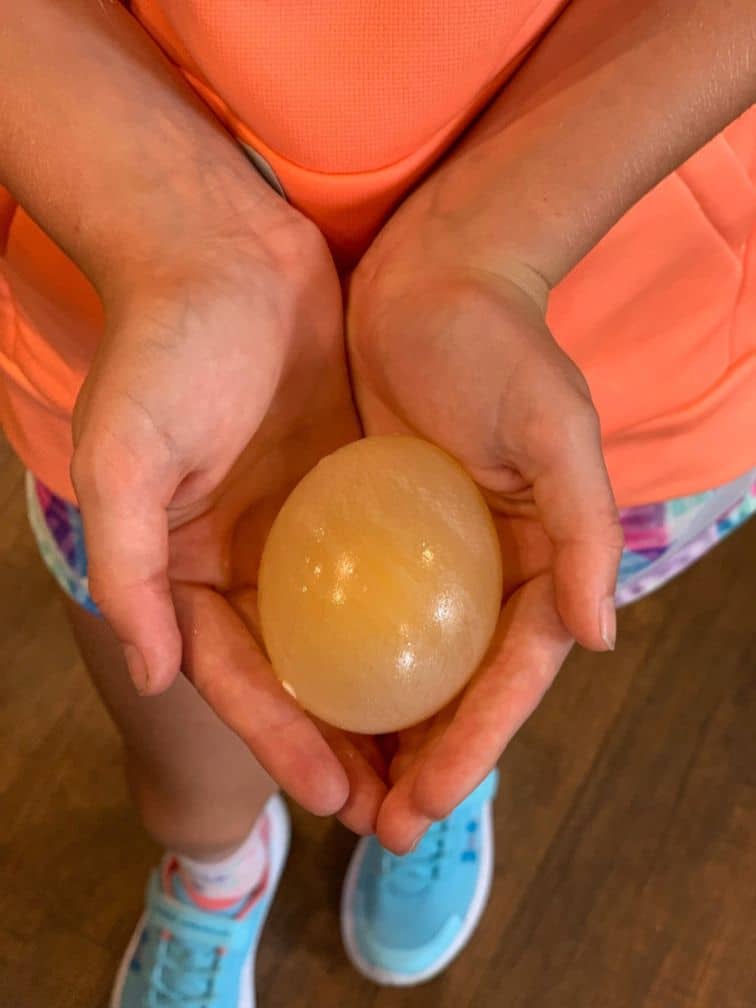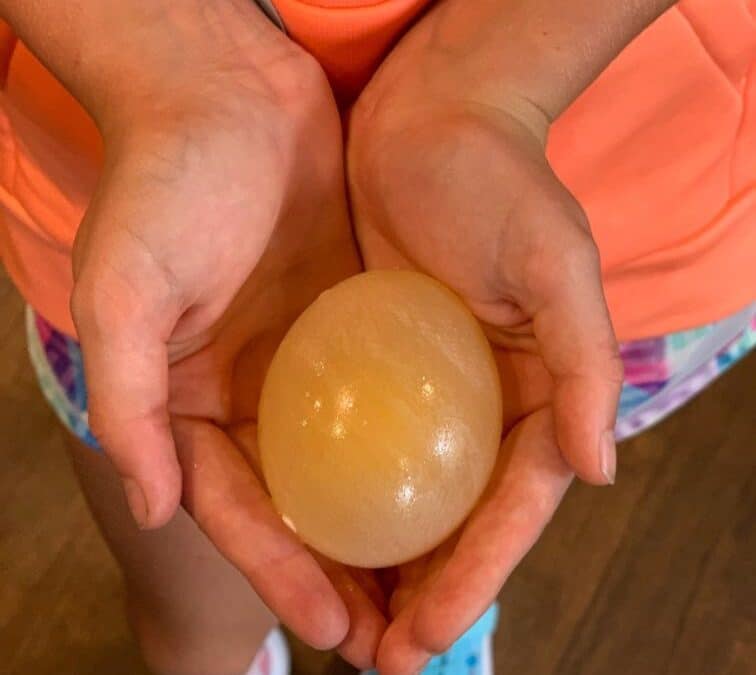This week in our afternoon camp, we explored the connection between food, cooking, and science. This bouncy egg experiment was one of the favorites this week. Students were each given a normal, uncooked chicken egg. They placed their egg in a jar and covered it with white vinegar. Each day, they would check their egg and replace some of the old vinegar with some new. The eggshell of a chicken egg is made of calcium carbonate, and vinegar is an acid. The calcium carbonate that makes up the eggshell will react with the vinegar the same way baking soda reacts with vinegar. Once the shell of the egg is gone, all that is left covering the egg is a thin membrane. The vinegar begins working on the egg’s membrane. The membrane of a chicken egg is selectively permeable. The vinegar is able to cross the selectively permeable membrane of the egg through osmosis. The vinegar toughens up the membrane of the egg making it bouncy!

Ingredients
- 1 raw egg
- Vinegar (any kind will do)
- Glass or jar
Instructions
- Place the egg into the jar. Pour enough vinegar in the jar to cover the top of the egg.
- Leave the egg in the glass for 2-3 days. Each day, check back on the egg. If you stop seeing bubbles forming on the outside of the egg, you will need to drain off your jar and add new vinegar. After about 3 days the egg will start to become translucent, and you will know it is ready to move to step 3.
- Carefully remove the egg from the glass, and rinse it under some tap water. While rinsing the egg, gently rub the outside of the egg and the white film will come off leaving you with a translucent egg.
- Over a plate, lift the egg 1-2 inches in the air, let go, and watch it bounce! When you are ready for some messy fun, lift the egg a little higher in the air and let it go…SPLAT!


